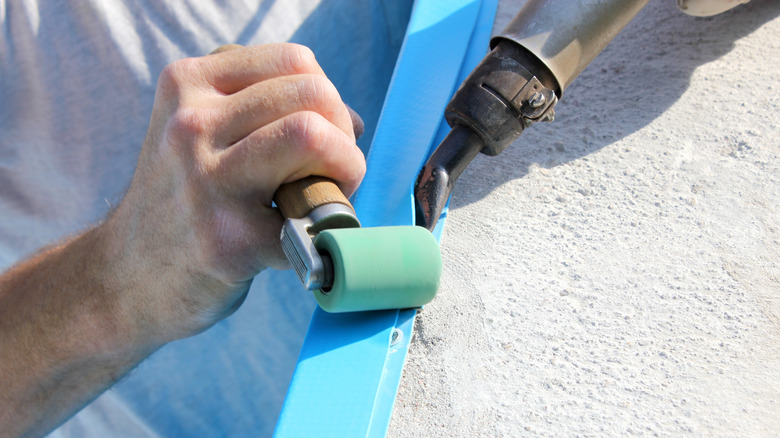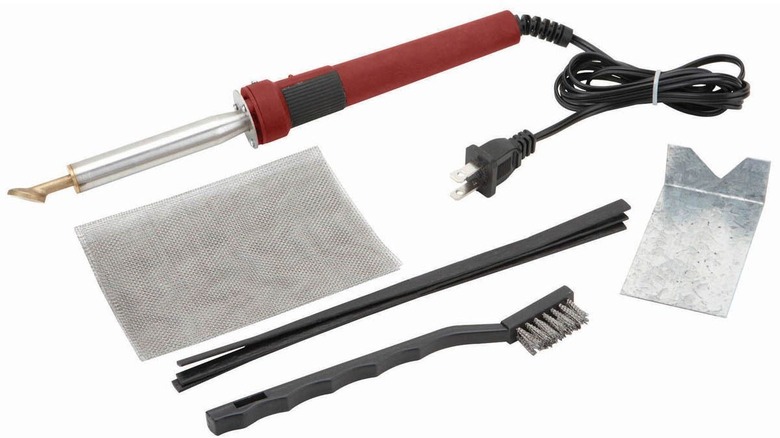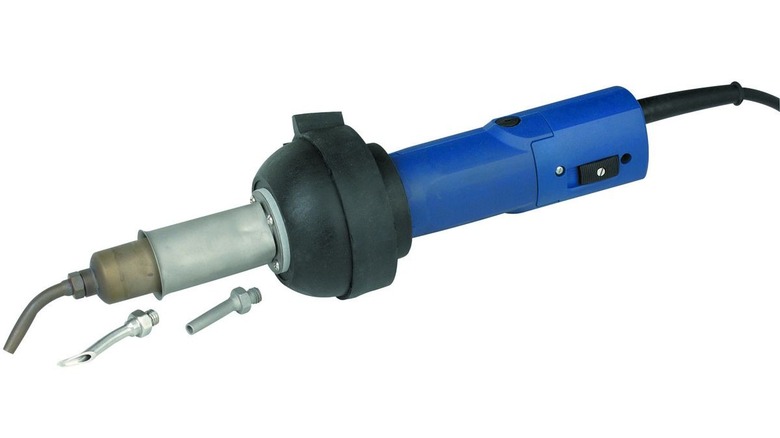Here's How Harbor Freight's Chicago Electric Plastic Welders Work
When you think of welding two objects together, your first assumption may be that the objects in question are made of metal. Indeed, metal welding is the most common kind, but that doesn't mean it's the only kind. With the right tools and knowledge, it's possible to weld different kinds of compatible materials together. With a little bit of heat and friction, just about anything can be coaxed together into a single, sturdier package.
For example, did you know you can weld pieces of plastic together? The idea seems strange on the surface, as plastics are generally nowhere near as sturdy as metal plates, but plastic's amorphous nature actually does make it surprisingly receptive to the welding process. The only question is what kind of tool would you need to engage in a bit of plastic welding? As it so happens, alongside its Titanium welding tools and its wide array of metal welding accessories, hardware chain Harbor Freight sells a couple of different plastic welders, both branded under one of its in-house labels, Chicago Electric. What's the deal with these tools, and while we're on the subject, how does plastic welding actually work?
Plastic welding in general
Before we get into the tools themselves, how exactly can you use a tool to weld chunks of plastic together? Plastic welding works more or less the same as metal welding: you use a tool to produce a high level of heat, place a couple of pieces of plastic together, then use the tool's heat to coax them into merging together. The only real difference is that, since plastic isn't as naturally tough as metal, you may need to apply a bit of extra pressure during the welding process to get the pieces to properly combine. Even if you didn't know plastic welding was a thing, there are probably a few instances of welded plastic around your home, such as plastic containers, pool toys, and flexible medical equipment.
Interestingly, there are actually a few different subsets of plastic welding. Since you don't need to reach temperatures as high as you would for metal, you can get a little more creative with how you deliver the heat. Plastic welding tools can apply heat through methods including simple hot air, focused lasers, and even powerful vibrations. As long as it makes things hot, just about anything goes.
There are two Chicago Electric plastic welders available at Harbor Freight, both designed to deliver different levels of heat for smaller or larger jobs, respectively.
Chicago Electric 80 Watt Iron Plastic Welder
The first plastic welder available at Harbor Freight is the 80-watt Iron Plastic Welder. As the name implies, this plastic welder is more akin to a soldering iron than, say, a butane torch, creating the necessary heat by simply delivering it through a heated iron point. That point can reach temperatures of up to 525 degrees Fahrenheit to weld plastic components together via the included repair sticks.
This tool can be used on pretty much any kind of plastic, though the product page highlights TPO, TEO, and PP plastics in particular, all of which are frequently used in the construction of car bumpers. According to user reviews, this welder can be used in the repair of a variety of plastic objects, including toy basketball hoops, storage bins, headlight tabs, and more.
The Chicago Electric 80 Watt Iron Plastic Welder costs $24.99 and comes bundled with a stack of repair sticks, a steel wire mesh, a wire brush, and a welder stand.
Chicago Electric 1,300 Watt Plastic Welder
The other plastic welder available at Harbor Freight is the 1,300 Watt Plastic Welder. If the difference in wattage didn't make it obvious, this plastic welder is intended more for heavier jobs. Rather than the regular contact welder used by the 80-watt model, this one is a hot air welder, delivering heated air through a metal tip to soften and merge plastics together. When activated, this tool can deliver streams of heated air ranging from 105 to 850 degrees Fahrenheit, great for really thick, stubborn plastic components. The precise temperature output is adjusted via a built-in potentiometer, allowing you to fine-tune your heat for plastics with different melting points.
According to the user reviews, this tool can be used to weld heavier-duty plastics back together. One user used it to repair a hole in a lawn mower gas tank, while another was able to mend a crack in a polyethylene water tank. Another user was even able to fully restore a plastic kayak with several holes in the side to working order.
The Chicago Electric 1,300 Watt Plastic Welder costs $89.99 and includes a stainless steel angle, bent nozzle, and curved and rounded tips. Unlike the other model, it doesn't come with repair sticks, so you would need to buy those separately.



